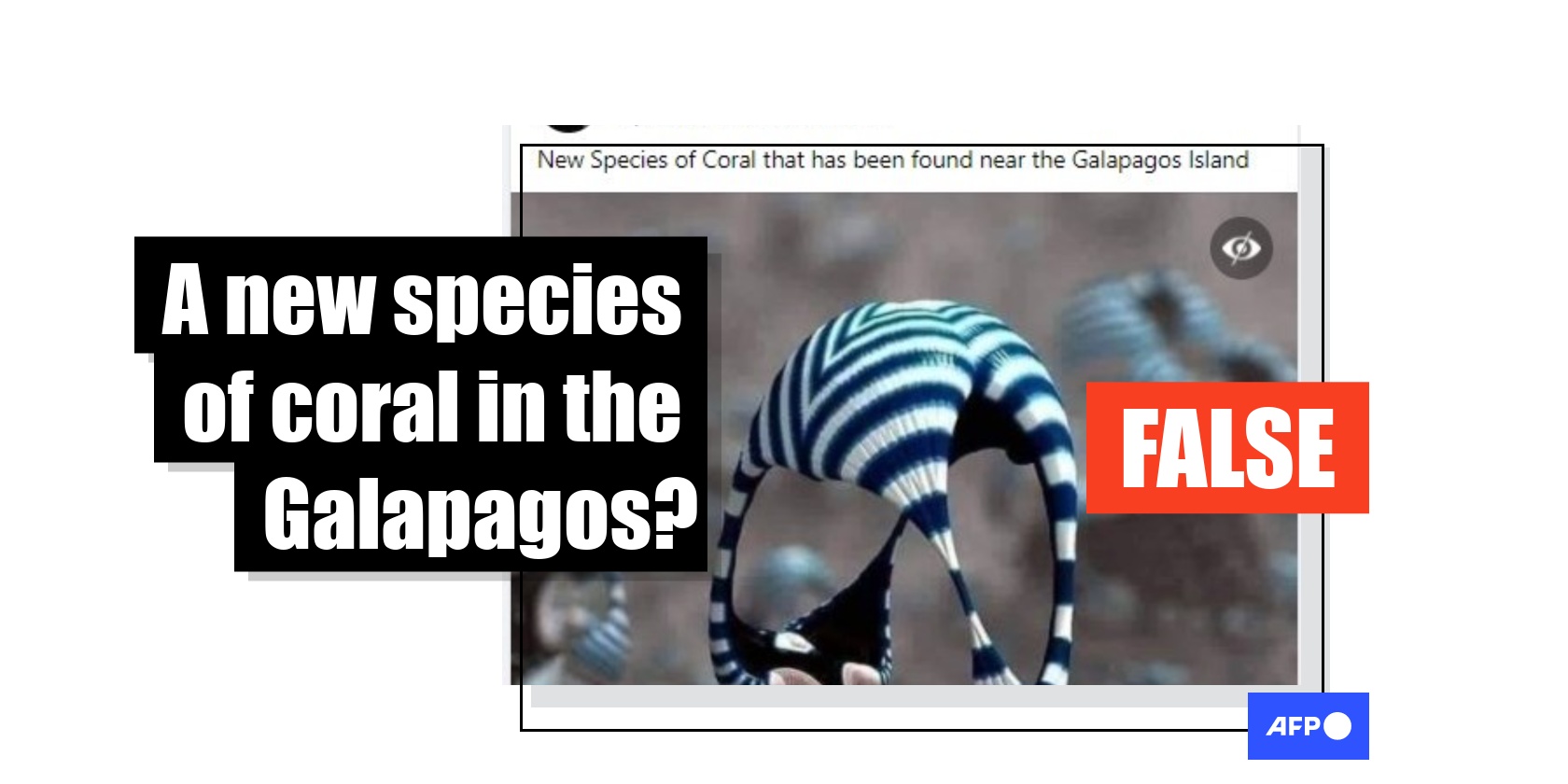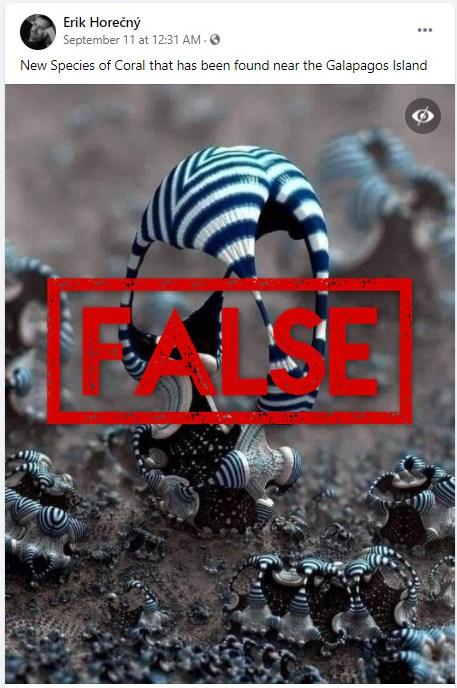
Image shows 3D artwork, not a new species of coral in the Galapagos
- This article is more than four years old.
- Published on September 21, 2021 at 12:38
- 2 min read
- By James OKONG'O, AFP South Africa
The post was published here on Facebook on September 11, 2021, and has since been shared over 2,500 times.
Image
 Screenshot of the post, taken on September 20, 2021
Screenshot of the post, taken on September 20, 2021

“New Species of Coral that has been found near the Galapagos Island (sic),” the caption of the post reads.
The Galapagos Islands are a UNESCO World Heritage situated in the Pacific Ocean. The islands are part of Ecuador.
But the claim that this image depicts a new species of coral in the waters near the Galapagos Islands is false.
Not real coral
By conducting a reverse image search, AFP Fact Check found that the photo has been online since at least 2017 and that it is a work of art, not a real coral.
The image was created by a Spanish digital artist, known as "batjorge". Titled "Ecosystem", the artwork first appeared on DeviantArt -- an art-sharing platform -- on August 27, 2017. The user "batjorge" has been active on the platform for nine years.
According to the user's "about" page, he is a Spanish digital artist who works in several media, including illustrations, photography, typography and 3D art.
Contacted by AFP Fact Check, the artist, who confirmed that his real name is Jorge Abalo, reiterated that the piece is digital art and does not show a new coral species.
“The image is an artwork and not a photo as some social media users say,” Abalo said.
He also posted a clarification on the DeviantArt website, writing that the image is a “3D fractal digital work, done with Mandelbulb 3D software”.
Fractal art uses geometric patterns, known as fractals, that repeat indefinitely. Fractal patterns can also be found in nature, such as on snowflakes and with certain flower petals. In fractal art, the artist creates a pattern using a mathematical formula, which then determines the design of the object.
Mandelbulb 3D is a software created for fractal imaging, which translates nonlinear equations into fractal objects.
Tim Dobyns, a spokesman for the Galapagos Conservancy, also confirmed to AFP Fact Check that the image doesn’t show a real organism discovered near the islands.
“That is a digitally rendered image, not a new species of coral,” said Dobyns.
AFP Fact Check has previously debunked posts sharing creative images mistaken for actual creatures here, here, and here.
Copyright © AFP 2017-2025. Any commercial use of this content requires a subscription. Click here to find out more.
Is there content that you would like AFP to fact-check? Get in touch.
Contact us
